by Douglas Arbittier, MD, MBA
Antique bloodletting or Phlebotomy instruments have long been a collectible within the medical field that crosses over with collections prized by tattoo artists, civil war enthusiasts, tools, and others interested in the history of this once common practice. Although the goal was to rid the body of unwanted influences on overall health, it most often did more harm than good.
In The Beginning
The practice of bloodletting, or phlebotomy, dates back to antiquity. The followers of Hippocrates in the fifth century B.C. strongly believed in bleeding patients; it is likely that this was done in Egyptian times and probably even before that.
Early civilizations may have been inspired by seeing bats remove blood from animals, hippos scratching on trees until they bled, and other animals scratching at diseased body parts for relief. Additionally, there were many human examples of bleeding such as spontaneous nosebleeds and menstruation that had yet to be explained. It is perhaps these signs in nature that led early civilizations to put it all together: bleeding must have some beneficial value!
From these simple observations came increasingly complex theories as to why bloodletting was necessary and how it worked. An early theory was that there were four main bodily humors: blood, phlegm, black bile, and yellow bile. An imbalance in these humors was postulated as the need for bloodletting, purging, vomiting, etc. Virtually every known medical condition at one time or another was treated by these methods. Bloodletting was used to treat everything from fever and madness to anemia and debility. As one can imagine, treating an anemic patient by removing even more blood was not the best of ideas. The popular belief that George Washington was bled to death proves that even “nobility” was not spared.
Through the Middle Ages and into the 18th and 19th century there were many strides in medical knowledge with regard to disease stages and anatomy. However, there was not much that could be done in terms of treatment. There were no antibiotics and surgery was in its infancy (in large part due to the lack of quality anesthesia). One of the only therapeutic modalities was to get out the old lancet and let some blood. It can safely be said that this almost never benefited the patient. Perhaps the biggest benefit was to the physician and family, who felt that at least they were doing something, and if the patient died anyway, it was meant to be.
Much detail is known about the history of bloodletting but an in-depth study is beyond the scope of this summary. Some of these items are still readily available on the antique market. Others are harder to find but do turn up from time to time. Most of these items are from the 18th and 19th centuries. Earlier items are essentially known only from illustrations.
The Lancet
The earliest bloodletters probably used sharpened pieces of wood and stone to “breath a vein.” There are many steel lancets with flat ebony, tortoise shell or ivory handles that exist today. There is some controversy surrounding these items.
Firstly, though they are called lancets, they are thought by some to be ink erasers (to scrape the ink off of the paper). Indeed, many have the signatures of stationers or cutlers that did not make surgical instruments on them; some are unsigned. Then there are those who think that they were used for both purposes. Some feel that as bloodletting went out of favor in the late 19th and early 20th century the many leftover lancets were sold as “leftover stock” to stationary stores and sold as ink erasers. While I’m not sure of the truth, I feel that the commonly seen ebony-handled steel pointed instruments with clover leaf shaped blades were not used for phlebotomy. I just haven’t seen much evidence for their use in bloodletting.
As you can see, these are standard 19th century thumb lancets in tortoise shell covers, or scales. These must have been made by the millions, mainly in England, but also in France, the U.S., and other countries. Some are signed with the maker’s name but many are either unsigned or just have a cutlers stamp. These items were standard equipment for physicians who made house calls. More decorative covers, in ivory and mother of pearl, were also used mainly by physicians and dentists to the middle class.
Thumb lancets were no doubt sometimes carried individually, but more commonly in a lancet case. These varied in form from simple leather boxes to beautiful engraved cases made of silver, mother of pearl, tortoise shell, and even gold. Often these cases had elaborate dedications from one physician to another, or perhaps from a patient who enjoyed being bled!
The Fleam
The fleam is perhaps easiest-to-find blood-letting antique. These devices have one or more blades at right angles to the handle. The most common form is a brass case containing 2 or 3 steel blades, often stamped with a makers name. The blades were usually of various sizes to offer a selection to the phlebotomist. Many of these fleams were likely used on animals but the ones with small blades no doubt were used at times on humans as well. Imagine the farming family that used their fleam for both purposes! Here, you can see several fleams in a bovine horn casing. Some of these came with a removable thumb lancet inserted into the horn case.
The fleams used for veterinary purposes were placed over the jugular vein of the neck most commonly and inserted with the help of a fleam stick. This was a heavy wooden club used to drive the blade in with a quick motion (so the horse didn’t know what hit him). Often the bleeder would place a sheet over the animals head so they didn’t see what was coming. It’s a good thing they didn’t bleed humans this way!
The Spring Lancet
A much more elegant bloodletting method was used for humans. While fleams were sometimes used, it was more common to use a spring loaded device in the 18th and 19th centuries when the spring lancet was developed (though its origins go back earlier than this). The German example shows a spring lancet in its simplest form. The case is brass and the blade is steel. The blade was cocked by the hook at end and released with the button on the side. Note the small size of the blade (for human use). Single blade spring lancets came in many sizes and shapes. Most were brass and steel but some were made of iron or silver. Devices with larger blades were probably for veterinary use. Note the one with the depth adjuster. One wonders if the bleeder was anxious over the politics of the time as he bled his patients, whether human or animal!
Why bleed with one spring-loaded blade when you could have 4, 12, or even 20?!
As long ago as the 17th century there were multi-bladed bleeders called scarificators. These became very popular in the late 18th and 19th centuries. Like spring lancets, they came in every size and description. Shown are basic octagonal English scarificators. The cases are brass and the mechanism and blades are steel. Many had a depth adjuster for the blades on the top and the blades would be cocked by the lever on top. The release switch is on the side. This allowed the blades to swing around, making multiple cuts at once. Scarificators with pointed V-shaped blades are probably pre-1820. Those with slightly rounded blades are later. Round scarificators are usually French in design and post-1860 (often around 1900!) Scarificators that have a mechanism allowing the blades to stay in the half-cocked position are probably post-1830.
Cupping
Once a scarificator was used to slice and dice the patient, a cup was often placed over the wound as a receptacle for the blood. Cups were made of tin, brass, rubber, horn, and most commonly glass. There were often suction devices attached to the cup to allow the removal of blood. Human lips, rubber bulbs, and brass syringes were all used as sources for suction.
The above methods were for “wet cupping.” At times “dry cupping” was used. This technique entailed creating suction in a cup placed over the skin without cutting the skin. Often a wad of burning material or the end of a heat lamp was placed in the cup to heat it. The cup was placed on the skin and a suction was created as it cooled. The skin then became engorged, presumably with evil humors that could improve health by coming to the surface.
All of the elements of wet and/or dry cupping were often placed in a complete kit, or cupping set. These sets often had multiple cups, suction devices, scarificators, spare blades, etc. Shown is a bloodletting kit consisting of 2 scarificators marked Perkins London, 4 cupping glasses, 1 cupping glass with syringe, and 1 spirit lamp, all in a fitted velvet lined mahogany case with inlaid brass cartouche to top and brass shield shaped escutcheon.
Leeches
A long-used alternative to the lancet or scarificator is the leech. Since antiquity in Greece, Rome and Syria, leeches have been used to suck blood from many sites on the body. Hirudinea Annelida was the favored European “strain” and Macrobetta decora was used in the US. Leeches have both male and female sex organs (fun fact of the day). They attach to the skin via 3 sharp teeth, inject an anticoagulant so the blood won’t clot, and then “fill up.” A European leech could ingest several times the amount of blood as an American leech, so the colonists often imported them.
Leeches were carried in a variety of containers that are now sought after by collectors. These include glass containers of varying sizes, and pewter containers that resemble miniature mailboxes to carry a few when going on house calls.
Perhaps the most beautiful leech containers are the large decorative ceramic containers with multi-colored floral and other motifs. These often are inscribed “leeches” in decorative lettering. They date to the mid-19th century for the most part. One must be cautious in purchasing these as reproductions are now commonplace. The thousands of dollars that an original costs have made repros very well done to entice—and often to fool—the buyer.
As with all antiques over the last 20 years, bloodletting antiques have become harder to find. They can range in price from $20 for a lancet/ink eraser up to many thousands for a fine leech jar or rare cupping set. As mentioned several times, one must be very careful to avoid reproductions, which are becoming more commonplace. Some English dealers have gutted wooden boxes, relined them with old looking velvet, and made a “custom” cupping set which looks genuine and original. It’s scary, when one realizes the costs of these items.
There are specialty medical antique dealers and auction houses that have medical sales in the US and Europe. One can pay top dollar buying this way. A more reasonable way to get started is to scour country sales and local estate auctions. Cupping sets do appear from time to time as do spring lancets and scarificators. Often no one knows what these were used for and the price is quite low. There is nothing more exciting than finding a $200 item for $20 and this still can happen!
Dr. Douglas Arbittier is a physician in York, Pennsylvania. He has been collecting medical and surgical antiques since his early teenage years. It all started with his mother purchasing an old medical exam chair for 5 dollars at a junk shop. She wanted her son to be a doctor, and giving him the chair must have done the trick! The Arbittier Museum of Medical History houses almost 3000 rare medical and surgical objects and art from the 15th to the 19th century. More information could be found at www.medicalantiques.com


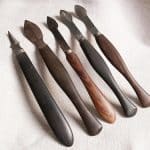
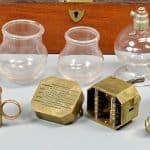
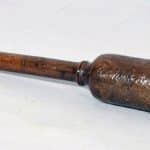

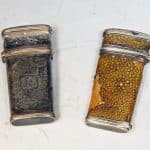
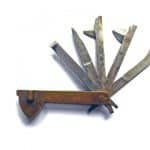
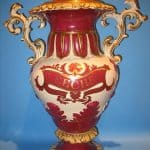
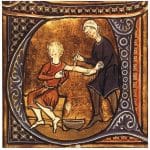
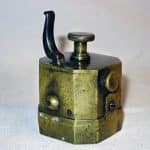
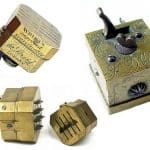
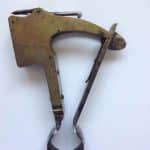
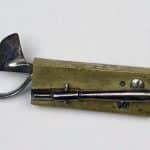



Related posts: